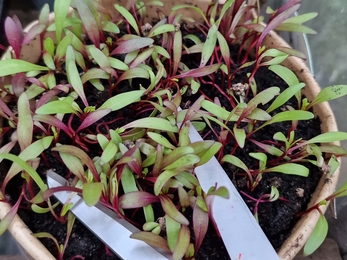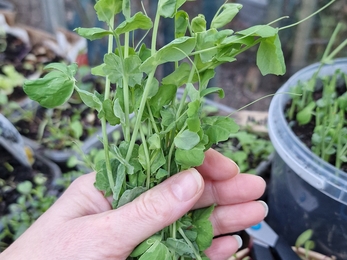How to grow microgreens
Alice Whitehead, from sustainable gardening charity Garden Organic, shares her tips for growing tiny windowsill crops this winter
You don’t need a big garden to get involved in our Coronation Gardens project – even a windowsill or a few pots can grow bite-sized vegetables through the winter months.
Microgreens are the perfect crop – as these immature vegetables and herbs are harvested and eaten at the seedling stage before they grow into adult plants.
Because they're never meant to reach full size, they don’t need hours of sunlight or lots of effort to grow well. A seed tray and some scissors are all you need.
Getting started
If an adult vegetable has an edible leaf, then it can be grown as a microgreen – so this includes a wide selection of vegetables, from cabbage to coriander. But potatoes, tomatoes and parsnip are best avoided as they have toxic leaves.
You don’t need expensive seeds to get growing. Out of date seeds can be put to good use such as radish (pick before the furry leaves arrive), garlic chives and mustard greens. Wholefood shops sell dried peas and spices such as coriander and onion that can all be grown as microgreens. Just ensure they’re organic.
More unusual microveg can include sunflowers (snipped before the second leaf arrives) and lemon balm (lovely sprinkled on ice-cream).
Growing your mini allotment
You can grow microgreens in pretty much anything, including margarine tubs, yoghurt pots and old fruit punnets – just as long as the container has drainage holes.
Because your seedlings will never reach maturity, there will be no need to feed, transplant, thin out or stake. Simply scatter the seeds over the surface of peat-free compost and cover with a thin layer.
If you want them to germinate at the same rate, and for easier snipping, you can pop a seed tray over the top and keep them somewhere dark until they sprout. Once you see a few shoots emerge, remove the lid and place the tray on a windowsill to allow the seedlings to green up.
Water your microgreens from below using a tray if the compost looks dry. Give your crop a haircut when they seedlings are an inch or two high and while they still have baby leaves. Some can crop as early as 21 days.
You can scatter your vegetable confetti on soups, stews, flans, and pizzas; mix into a salad or gently sauté in a stir fry. Leave your shorn seedlings for a week and keep watering, and they may reward you with a double harvest.
Microgreens offer a low-cost, traceable, and sustainable way to grow salad greens.
And best of all, these tiny plants are packed with all the nutrients and big flavours of their parents.



